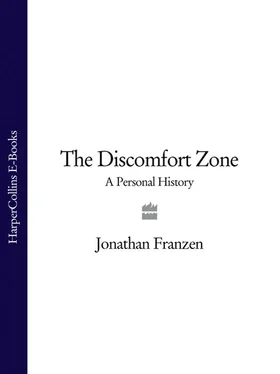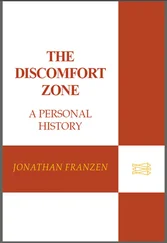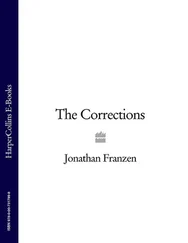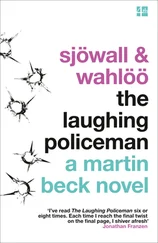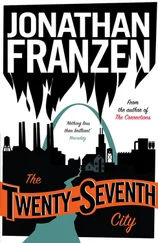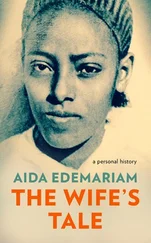Tom and my father had been talking in the living room when I went up to bed. Now, at some late and even stuffier hour, after I’d put aside the Peanuts Treasury and fallen asleep, Tom burst into our bedroom. He was shouting sarcastically. “You’ll get over it! You’ll forget about me! It’ll be so much easier! You’ll get over it!”
My father was offstage somewhere, making large abstract sounds. My mother was right behind Tom, sobbing at his shoulder, begging him to stop, to stop. He was pulling open dresser drawers, repacking bags he’d only recently unpacked. “You think you want me here,” he said, “but you’ll get over it.”
What about me? my mother pleaded. What about Jon?
“You’ll get over it.”
I was a small and fundamentally ridiculous person. Even if I’d dared sit up in bed, what could I have said? “Excuse me, I’m trying to sleep”? I lay still and followed the action through my eyelashes. There were further dramatic comings and goings, through some of which I may in fact have slept. Finally I heard Tom’s feet pounding down the stairs and my mother’s terrible cries, now nearly shrieks, receding after him: “Tom! Tom! Tom! Please! Tom!” And then the front door slammed.
Things like this had never happened in our house. The worst fight I’d ever witnessed was between my brothers on the subject of Frank Zappa, whose music Tom admired and Bob one afternoon dismissed with such patronizing disdain that Tom began to sneer at Bob’s own favorite group, the Supremes; which led to bitter words. But a scene of real wailing and open rage was completely off the map. When I woke up the next morning, the memory of it already felt decades old and semi-dreamlike and unmentionable.
My father had left for work, and my mother served me breakfast without comment. The food on the table, the jingles on the radio, and the walk to school all were unremarkable; and yet everything about the day was soaked in dread. At school that week, in Miss Niblack’s class, we were rehearsing our fifth-grade play. The script, which I’d written, had a large number of bit parts and one very generous role that I’d created with my own memorization abilities in mind. The action took place on a boat, involved a taciturn villain named Mr. Scuba, and lacked the most rudimentary comedy, point, or moral. Not even I, who got to do most of the talking, enjoyed being in it. Its badness—my responsibility for its badness—became part of the day’s general dread.
There was something dreadful about springtime itself. The riot of biology, the Lord of the Flies buzzing, the pullulating mud. After school, instead of staying outside to play, I followed my dread home and cornered my mother in our dining room. I asked her about my upcoming class performance. Would Dad be in town for it? What about Bob? Would Bob be home from college yet? And what about Tom? Would Tom be there, too? This was quite plausibly an innocent line of questioning—I was a small glutton for attention, forever turning conversations to the subject of myself—and, for a while, my mother gave me plausibly innocent answers. Then she slumped into a chair, put her face in her hands, and began to weep.
“Didn’t you hear anything last night?” she said.
“No.”
“You didn’t hear Tom and Dad shouting? You didn’t hear doors slamming?”
“No!”
She gathered me in her arms, which was probably the main thing I’d been dreading. I stood there stiffly while she hugged me. “Tom and Dad had a terrible fight,” she said. “After you went to bed. They had a terrible fight, and Tom got his things and left the house, and we don’t know where he went.”
“Oh.”
“I thought we’d hear from him today, but he hasn’t called, and I’m frantic, not knowing where he is. I’m just frantic!”
I squirmed a little in her grip.
“But this has nothing to do with you,” she said. “It’s between him and Dad and has nothing to do with you. I’m sure Tom’s sorry he won’t be here to see your play. Or maybe, who knows, he’ll be back by Friday and he will see it.”
“OK.”
“But I don’t want you telling anyone he’s gone until we know where he is. Will you agree not to tell anyone?”
“OK,” I said, breaking free of her. “Can we turn the air-conditioning on?”
I was unaware of it, but an epidemic had broken out across the country. Late adolescents in suburbs like ours had suddenly gone berserk, running away to other cities to have sex and not go to college, ingesting every substance they could get their hands on, not just clashing with their parents but rejecting and annihilating everything about them. For a while, the parents were so frightened and so mystified and so ashamed that each family, especially mine, quarantined itself and suffered by itself.
When I went upstairs, my bedroom felt like an overwarm sickroom. The clearest remaining vestige of Tom was the Don’t Look Back poster that he’d taped to a flank of his dresser where Bob Dylan’s psychedelic hairstyle wouldn’t always be catching my mother’s censorious eye. Tom’s bed, neatly made, was the bed of a kid carried off by an epidemic.
In that unsettled season, as the so-called generation gap was rending the cultural landscape, Charles Schulz’s work was uniquely beloved. Fifty-five million Americans had seen A Charlie Brown Christmas the previous December, for a Nielsen share of better than fifty percent. The musical You’re a Good Man, Charlie Brown was in its second sold-out year on Broadway. The astronauts of Apollo X, in their dress rehearsal of the first lunar landing, had christened their orbiter and landing vehicle Charlie Brown and Snoopy. Newspapers carrying “Peanuts” reached more than 150 million readers, “Peanuts” collections were all over the bestseller lists, and if my own friends were any indication, there was hardly a kid’s bedroom in America without a “Peanuts” wastebasket or “Peanuts” bedsheets or a “Peanuts” wall hanging. Schulz, by a luxurious margin, was the most famous living artist on the planet.
To the countercultural mind, the strip’s square panels were the only square thing about it. A begoggled beagle piloting a doghouse and getting shot down by the Red Baron had the same antic valence as Yossarian paddling a dinghy to Sweden. Wouldn’t the country be better off listening to Linus Van Pelt than to Robert McNamara? This was the era of flower children, not flower adults. But the strip appealed to older Americans as well. It was unfailingly inoffensive (Snoopy never lifted a leg) and was set in a safe, attractive suburb where the kids, except for Pigpen, whose image Ron McKernan of the Grateful Dead pointedly embraced, were clean and well-spoken and conservatively dressed. Hippies and astronauts, the rejecting kids and the rejected grownups, were all of one mind here.
An exception was my own household. As far as I know, my father never in his life read a comic strip, and my mother’s interest in the funnies was limited to a single-panel feature called “The Girls,” whose generic middle-aged matrons, with their weight problems and stinginess and poor driving skills and weakness for department-store bargains, she found just endlessly amusing.
I didn’t buy comic books, not even Mad magazine, but I worshipped at the altars of Warner Bros, cartoons and the funnies section of the St. Louis Post-Dispatch. I read the section’s black-and-white page first, skipping the dramatic features like “Steve Roper” and “Juliet Jones” and glancing at “Li’l Abner” only to satisfy myself that it was still trashy and repellent. On the full-color back page I read the strips strictly in reverse order of preference, doing my best to be amused by Dagwood Bumstead’s midnight snacks and struggling to ignore the fact that Tiger and Punkinhead were the kind of messy, unreflective kids whom I disliked in real life, before I treated myself to my favorite strip, “B.C.” The strip, by Johnny Hart, was caveman humor. Hart wrung hundreds of gags from the friendship between a flightless bird and a long-suffering tortoise who was constantly attempting unturtlish feats of agility and flexibility. Debts were always paid in clams; dinner was always roast leg of something. When I was done with “B.C.,” I was done with the paper.
Читать дальше
